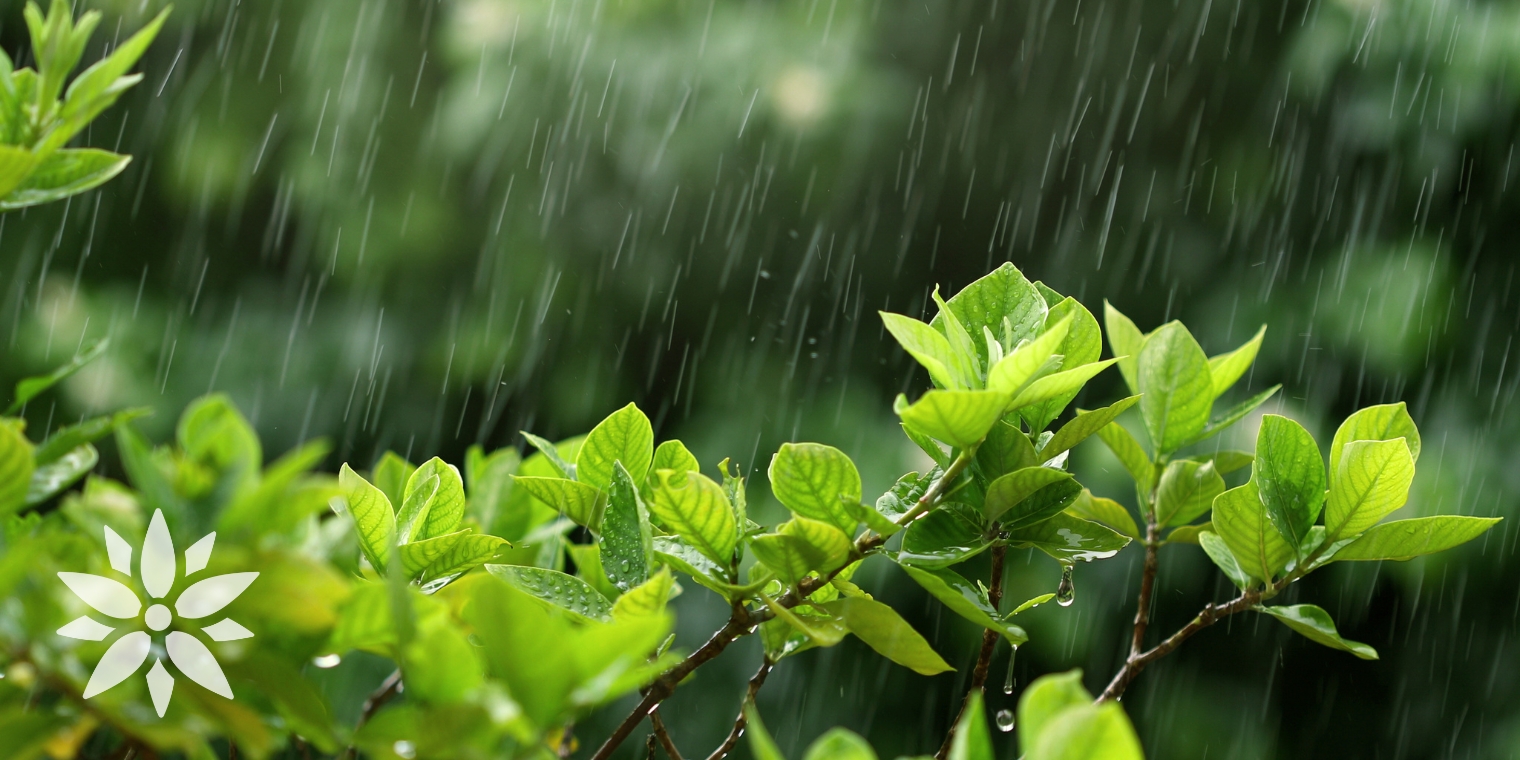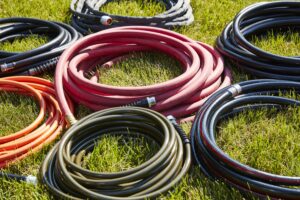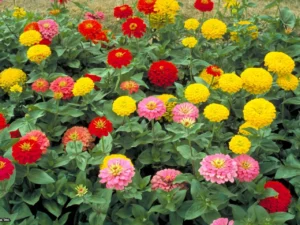Benefits of Rain Gardens and How to Build One
Rain gardens are becoming increasingly popular landscape features across the United States, and for good reason. These beautiful, functional additions to your yard not only enhance your property’s aesthetic appeal but also provide numerous environmental benefits. From managing stormwater runoff to supporting local wildlife, rain gardens are a smart investment for any homeowner concerned about sustainability. In this comprehensive guide, you’ll discover the many advantages of rain gardens and learn exactly how to build one on your property.
What Is a Rain Garden?
A rain garden is a strategically designed depression in your landscape planted with native vegetation that helps collect, absorb, and filter rainwater runoff from impervious surfaces like roofs, driveways, and walkways. Unlike standard gardens, rain gardens are specifically engineered to manage stormwater effectively while adding beauty to your yard.
According to the U.S. Environmental Protection Agency, “A rain garden is a depressed area in the landscape that collects rain water from a roof, driveway or street and allows it to soak into the ground. Planted with grasses and flowering perennials, rain gardens can be a cost-effective and beautiful way to reduce runoff from your property.” (EPA Soak Up the Rain)
Environmental Benefits of Rain Gardens
Water Quality Improvement
One of the most significant benefits of rain gardens is their ability to improve water quality in your local watershed. When rain falls on impervious surfaces, it picks up pollutants like oil, fertilizers, pesticides, and debris before flowing into storm drains and eventually into streams, rivers, and lakes.
Your rain garden acts as a natural filter, allowing these pollutants to be captured and broken down by the soil microorganisms and plants. The U.S. Geological Survey has found that rain gardens can remove up to 90% of nutrients and chemicals and up to 80% of sediments from rainwater runoff.
Reduced Flooding and Erosion
By capturing rainwater and allowing it to slowly infiltrate into the soil, rain gardens help reduce localized flooding and soil erosion. This is particularly important in urban and suburban areas where impervious surfaces have replaced natural landscape.
A standard residential rain garden can manage runoff from a roof area of approximately 500-1,000 square feet. By implementing these features throughout a neighborhood, communities can significantly reduce the strain on municipal stormwater systems during heavy rainfall events.
Groundwater Recharge
Rather than allowing rainwater to flow directly into storm sewers, rain gardens facilitate groundwater recharge by allowing water to slowly percolate through the soil. This helps maintain the natural water cycle and contributes to the replenishment of local aquifers, which is especially important in areas experiencing water scarcity issues.
Support for Biodiversity
Rain gardens planted with native species provide essential habitat and food sources for local wildlife, particularly birds, butterflies, and beneficial insects like bees. According to the National Wildlife Federation, a properly designed rain garden can increase the biodiversity in your yard by up to 50%.
Climate Resilience
As climate change brings more intense precipitation events to many parts of the United States, rain gardens offer an effective strategy for climate adaptation. Their ability to manage increased rainfall helps communities become more resilient to changing weather patterns.
Economic Benefits of Rain Gardens
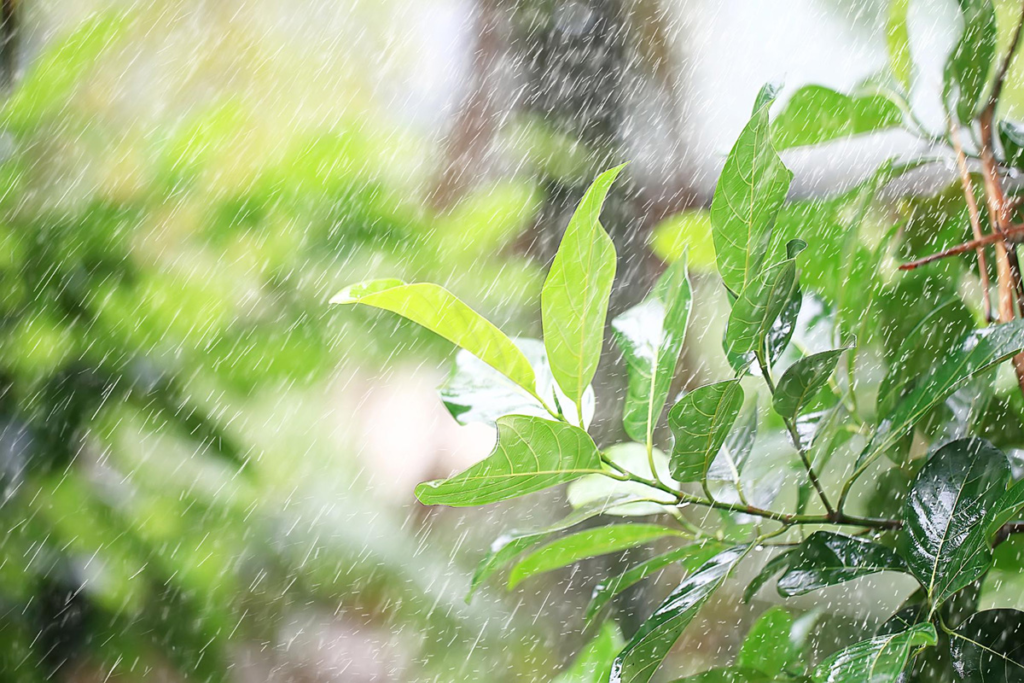
Property Value Enhancement
A well-designed rain garden adds aesthetic appeal to your property, potentially increasing its value. According to a study by the University of Washington, homes with attractive landscaped gardens can sell for 10-12% more than homes without such features.
Reduced Water Bills
If you’re paying for municipal water for landscape irrigation, a rain garden can help reduce your water bills by making better use of natural rainfall. Additionally, in some municipalities, you may qualify for stormwater fee discounts by implementing green infrastructure like rain gardens on your property.
Low Maintenance Costs
Once established, rain gardens require minimal maintenance compared to traditional landscaping. Native plants typically need less watering, fertilizing, and pest control, saving you time and money in the long run.
Health and Social Benefits
Mental Health Improvement
Green spaces like rain gardens have been linked to improved mental health and reduced stress levels. The beauty of flowering native plants, combined with the relaxing sounds of rainwater and visiting wildlife, creates a therapeutic outdoor environment.
Community Building
Rain garden projects can bring neighborhoods together, fostering a sense of community and shared purpose. Many cities have implemented community rain garden programs that encourage residents to work together to improve their local environment.
Educational Opportunities
Rain gardens provide excellent opportunities for environmental education, particularly for children. They demonstrate ecological principles in action and help future generations understand the importance of sustainable water management.
Rain Garden Performance Comparison
The following table illustrates how rain gardens compare to other stormwater management approaches in terms of effectiveness and benefits:
| Stormwater Management Method | Pollutant Removal Efficiency | Installation Cost | Maintenance Requirements | Aesthetic Value | Wildlife Benefit |
|---|---|---|---|---|---|
| Rain Garden | High (70-90%) | $3-6 per sq ft | Low-Moderate | High | High |
| Traditional Lawn | Low (10-20%) | $1-2 per sq ft | High | Moderate | Low |
| Gravel Dry Well | Moderate (40-60%) | $2-5 per sq ft | Low | Low | None |
| Permeable Pavement | Moderate (50-70%) | $10-15 per sq ft | Moderate | Moderate | None |
| Detention Basin | Moderate (50-70%) | $5-10 per sq ft | Moderate-High | Low-Moderate | Low-Moderate |
Data compiled from EPA and USDA Natural Resources Conservation Service resources
How to Build a Rain Garden: Step-by-Step Guide
Planning Your Rain Garden
Site Selection
The first step in creating your rain garden is choosing the right location:
- Observe water flow: During rainfall, observe where water naturally flows on your property.
- Distance from structures: Place your rain garden at least 10 feet away from building foundations to prevent water infiltration issues.
- Avoid utility lines: Contact your local utility marking service (call 811) before digging to ensure you don’t hit any underground utilities.
- Consider sun exposure: Most native rain garden plants prefer full to partial sun, so select a location accordingly.
- Stay away from septic systems: If you have a septic system, keep your rain garden at least 50 feet away from the drain field.
According to the Wisconsin Department of Natural Resources, “The best location for your rain garden is not too close but not too far from the source of runoff (roof, driveway, etc.). A distance of 10 feet from buildings will allow water to spread out a bit before it enters the garden.” (Wisconsin DNR Rain Garden Information)
Size Calculation
The size of your rain garden depends on:
- The area of impervious surface draining to it
- Your soil type
- The typical rainfall in your region
A general guideline is to make your rain garden about 20-30% of the size of the roof, driveway, or other impervious surface that will drain into it. For clay soils, aim for the higher end of that range.
Here’s a simple formula:
Rain Garden Size (sq ft) = Impervious Surface Area (sq ft) × 0.2 to 0.3
Soil Assessment
Perform a simple percolation test to determine your soil’s drainage rate:
- Dig a hole about 8 inches deep where you plan to install your rain garden
- Fill it with water and let it drain completely
- Refill the hole and measure how quickly the water level drops
- If water drains at a rate of at least 1 inch per hour, your soil has adequate drainage for a rain garden.
- If drainage is slower, you’ll need to amend the soil or consider creating a deeper rain garden with additional drainage features.
Construction Process
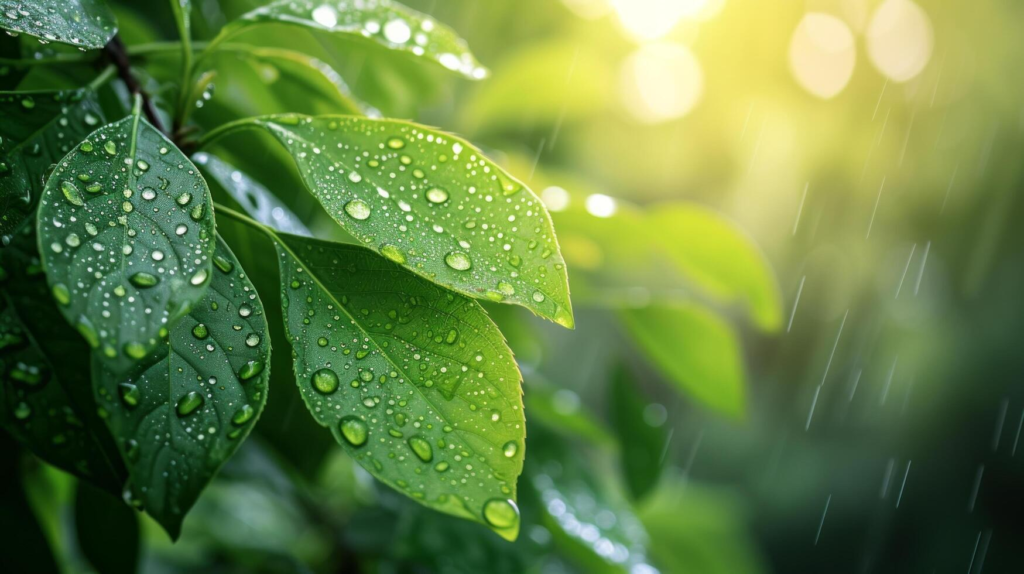
Materials You’ll Need:
- Shovel and/or small excavator (for larger gardens)
- Measuring tape
- String or garden hose (to mark the outline)
- Level
- Compost or soil amendments
- Mulch (shredded hardwood works best)
- Native plants
- Edging material (optional)
- Rocks or river stones (for inflow areas)
Step 1: Mark the Area
Use a garden hose or string to outline the shape of your rain garden. Most rain gardens have an oval, kidney, or teardrop shape, but you can be creative as long as the garden functions properly.
Step 2: Excavate the Basin
- Dig out the basin to a depth of 4-8 inches, depending on your soil type and drainage needs.
- Create a level bottom with gently sloping sides (no steeper than 3:1).
- Use the excavated soil to create a berm on the downhill side of the garden.
Step 3: Amend the Soil
- Break up the soil at the bottom of the basin to improve infiltration.
- Mix in compost or other organic matter to create a soil mixture that is roughly 60% native soil and 40% compost.
- For very poor drainage, consider adding a layer of sand or gravel at the bottom.
Step 4: Create an Inlet and Overflow
- Design an inlet where water will flow into your rain garden, using stones or a short length of buried pipe to prevent erosion.
- Establish an overflow area where excess water can exit during heavy rain events.
Step 5: Plant Selection and Installation
Choose native plants based on your region and the moisture zones within your rain garden:
- Bottom zone (wettest): Select plants that can tolerate periodic standing water.
- Middle zone: Choose plants that can handle occasional wet conditions.
- Upper edges: Use plants that prefer drier conditions.
Plant in groups of three to five of the same species for visual impact and arrange taller plants toward the back or center of the garden.
The U.S. Department of Agriculture’s Natural Resources Conservation Service provides excellent resources for native plant selection specific to your region: USDA NRCS Plant Materials Program
Step 6: Apply Mulch
Add 2-3 inches of shredded hardwood mulch to:
- Retain moisture
- Suppress weeds
- Prevent soil erosion
- Add organic matter as it breaks down
Avoid floating mulches like pine bark that can wash away during rain events.
Maintenance Guidelines
First Year Care
During the establishment period (first year), your rain garden will require more attention:
- Watering: Water regularly during dry periods until plants are established.
- Weeding: Remove unwanted plants before they become established.
- Reinforcing: Check for and repair any erosion issues after heavy rainfall.
- Replacing: Replace any plants that don’t survive.
Long-Term Maintenance
Once established, rain gardens require minimal maintenance:
- Spring cleanup: Remove dead plant material and add fresh mulch if needed.
- Occasional weeding: Pull invasive species as they appear.
- Pruning: Cut back overgrown plants as needed.
- Sediment removal: Occasionally remove accumulated sediment to maintain capacity.
- Division: Divide crowded perennials every 3-5 years.
Common Rain Garden Plants by Region
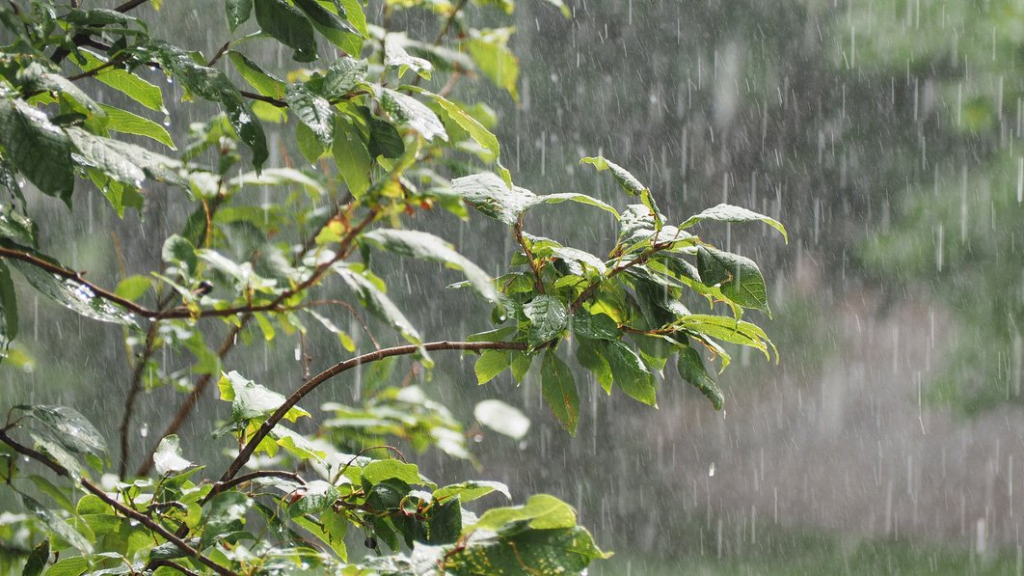
Northeast and Mid-Atlantic
- Black-Eyed Susan (Rudbeckia hirta)
- New England Aster (Symphyotrichum novae-angliae)
- Switchgrass (Panicum virgatum)
- Blue Flag Iris (Iris versicolor)
- Cardinal Flower (Lobelia cardinalis)
Midwest
- Prairie Blazing Star (Liatris pycnostachya)
- Purple Coneflower (Echinacea purpurea)
- Little Bluestem (Schizachyrium scoparium)
- Ohio Spiderwort (Tradescantia ohiensis)
- Fox Sedge (Carex vulpinoidea)
Southeast
- Joe-Pye Weed (Eutrochium purpureum)
- Louisiana Iris (Iris louisiana hybrids)
- River Oats (Chasmanthium latifolium)
- Swamp Milkweed (Asclepias incarnata)
- Buttonbush (Cephalanthus occidentalis)
Southwest
- Desert Willow (Chilopsis linearis)
- Autumn Sage (Salvia greggii)
- Lindheimer’s Muhly (Muhlenbergia lindheimeri)
- Black Dalea (Dalea frutescens)
- Skeleton-leaf Goldeneye (Viguiera stenoloba)
Pacific Northwest
- Camas (Camassia quamash)
- Pacific Ninebark (Physocarpus capitatus)
- Douglas Iris (Iris douglasiana)
- Western Columbine (Aquilegia formosa)
- Tufted Hairgrass (Deschampsia cespitosa)
Overcoming Common Challenges
Poor Drainage
If your soil has very poor drainage, you may need to:
- Install a French drain beneath your rain garden
- Create a deeper basin with more drainage layers
- Consider a rain garden with a liner and an underdrain connected to your stormwater system
Limited Space
For small yards, consider:
- A series of smaller interconnected rain gardens
- A combination rain garden/dry well system
- A vertical rain garden with stepped levels
Excessive Runoff
If you have large volumes of runoff:
- Create a larger or deeper rain garden
- Implement multiple rain gardens
- Combine your rain garden with other stormwater management features like rain barrels
Clay Soils
For heavy clay soils:
- Dig deeper and replace more soil with a good rain garden mix
- Install drainage pipes beneath the garden if necessary
- Select plants that are particularly tolerant of clay soils
Funding Your Rain Garden
Many municipalities offer incentives for homeowners to install rain gardens:
- Rebate programs: Check with your local water utility or environmental department for potential rebates.
- Cost-sharing programs: Some localities will pay for a portion of your rain garden installation costs.
- Tax incentives: A few jurisdictions offer property tax reductions for green infrastructure.
- Stormwater fee discounts: In areas with stormwater utility fees, you may qualify for reduced fees.
The EPA’s Water Infrastructure and Resiliency Finance Center provides information on funding opportunities: EPA Green Infrastructure Funding
Conclusion
Rain gardens represent one of the most accessible and effective ways for homeowners to contribute to environmental sustainability while enhancing their property’s beauty and value. By capturing and filtering stormwater runoff, these landscape features help protect water quality, reduce flooding, support biodiversity, and create resilience against climate change impacts.
Whether you’re motivated by environmental concerns, looking to solve drainage problems on your property, or simply want to create a beautiful native plant garden, rain gardens offer a solution that benefits both you and your community. With proper planning and installation, your rain garden will provide years of enjoyment while making a positive impact on the local ecosystem.
As more homeowners embrace this sustainable landscaping approach, our neighborhoods and watersheds will become healthier and more resilient. Consider joining the growing movement of rain garden enthusiasts and transform your yard into a functional, beautiful piece of green infrastructure today.
